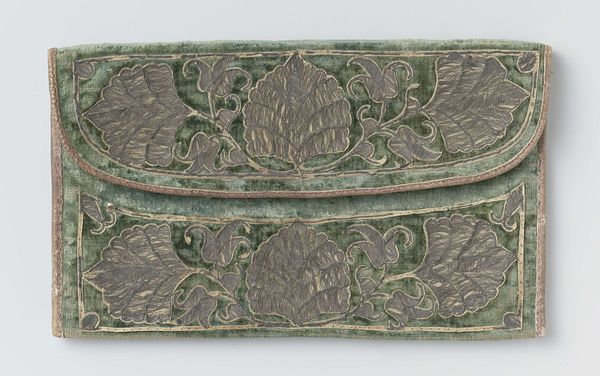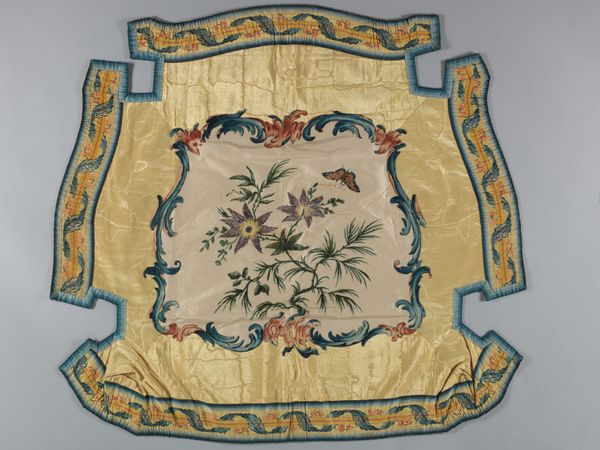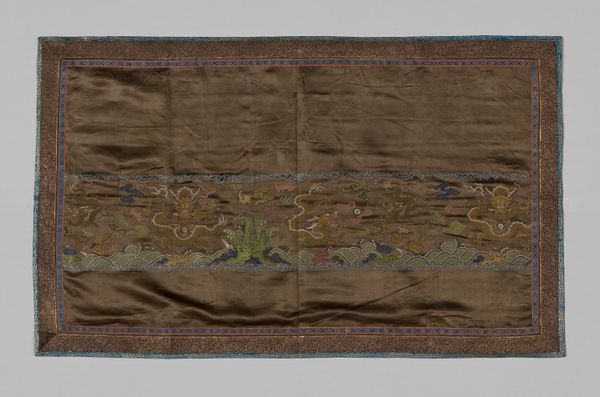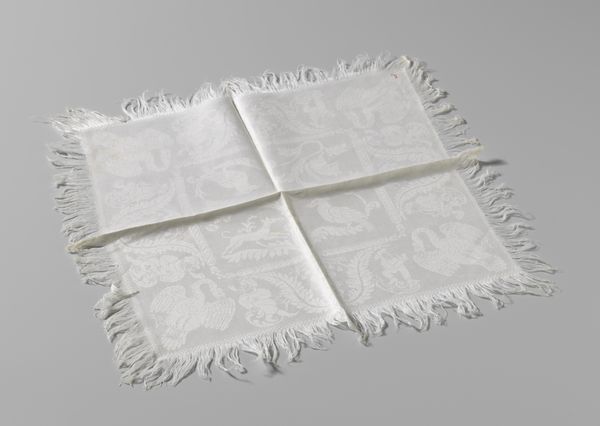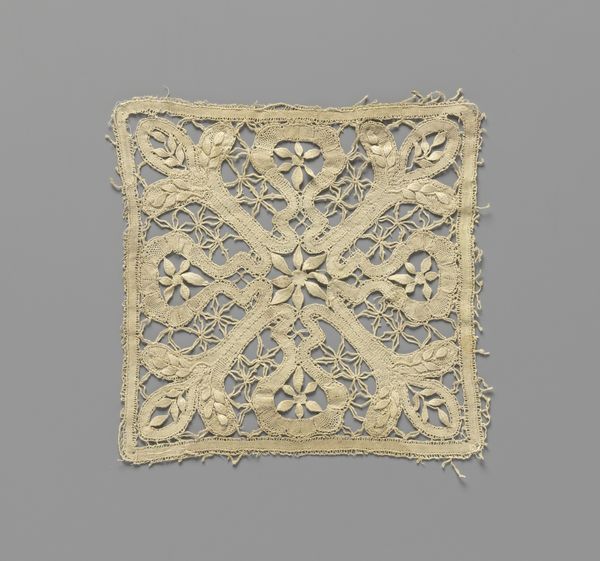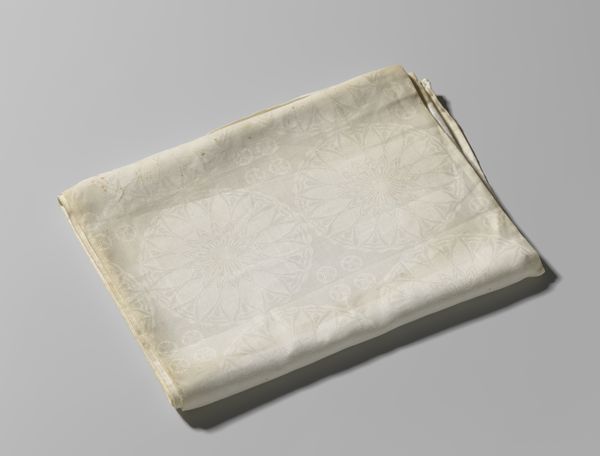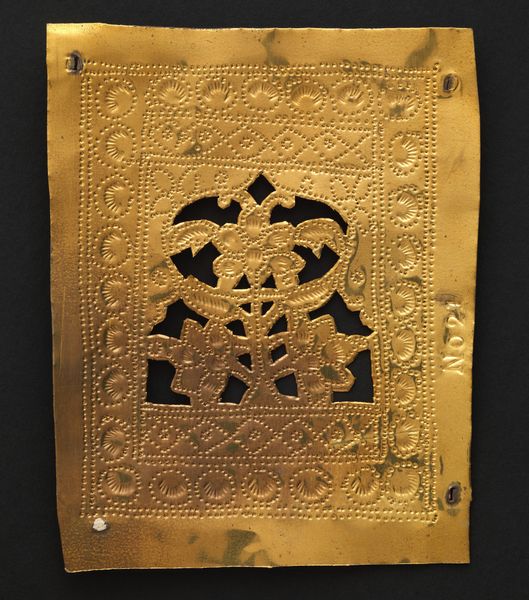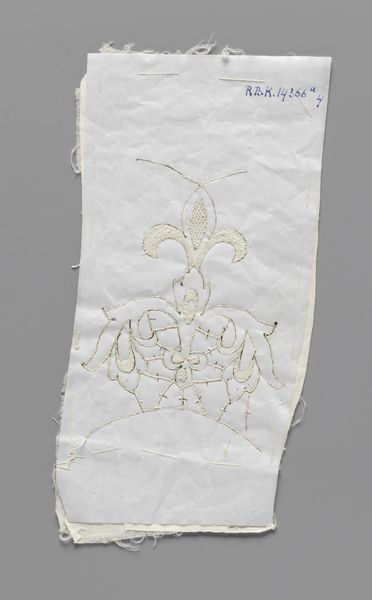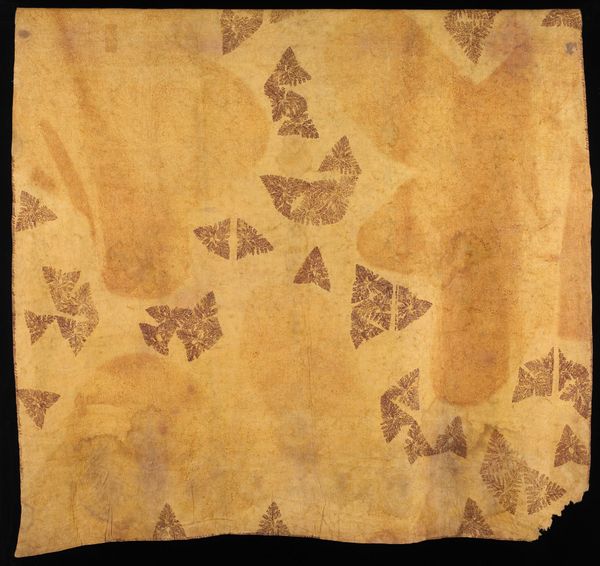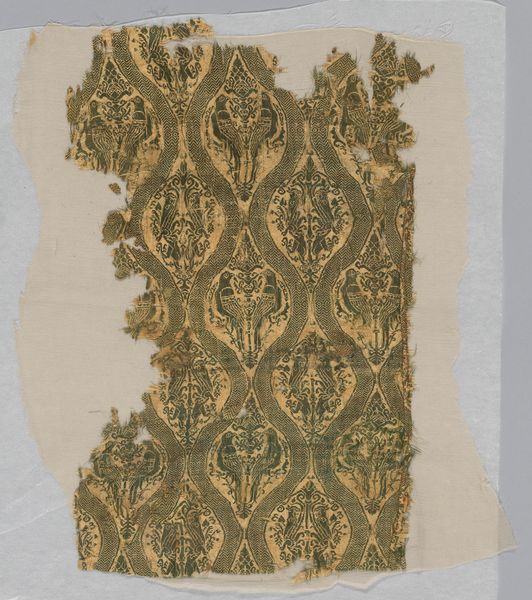
Gereedschap voor een naaldkantmotief in de vorm van kleermakerslinnen waarop groen perkament is genaaid met witte traceerdraden in de vorm van een boeket bloemen voor op een korte mouw c. 1906 - 1910
0:00
0:00
drawing, textile, paper
#
drawing
#
art-nouveau
#
textile
#
paper
#
coloured pencil
#
decorative-art
Dimensions: length 9 cm, width 9 cm
Copyright: Rijks Museum: Open Domain
This is a lacemaking design, made by the Kantwerkschool in The Hague. Here we see tailor's linen with green parchment attached. White thread traces the pattern of a floral bouquet, designed to adorn a short sleeve. The Kantwerkschool, or Lace School, represents a fascinating intersection of art, craft, and social reform. Established in the Netherlands, it aimed to revive the traditional craft of lacemaking and provide economic opportunities for women. Lace schools flourished across Europe in the 19th and early 20th centuries, often with philanthropic or nationalist motivations. They sought to preserve cultural heritage while addressing issues of poverty and female employment. This particular design reflects the era's aesthetic preferences for floral motifs, while also speaking to the school's role in shaping and standardizing lacemaking techniques. Archival records from schools like the Kantwerkschool offer insights into the curriculum, the social backgrounds of the students, and the economic impact of these institutions. These objects offer an insight into the social and cultural forces that shaped artistic production.
Comments
No comments
Be the first to comment and join the conversation on the ultimate creative platform.
